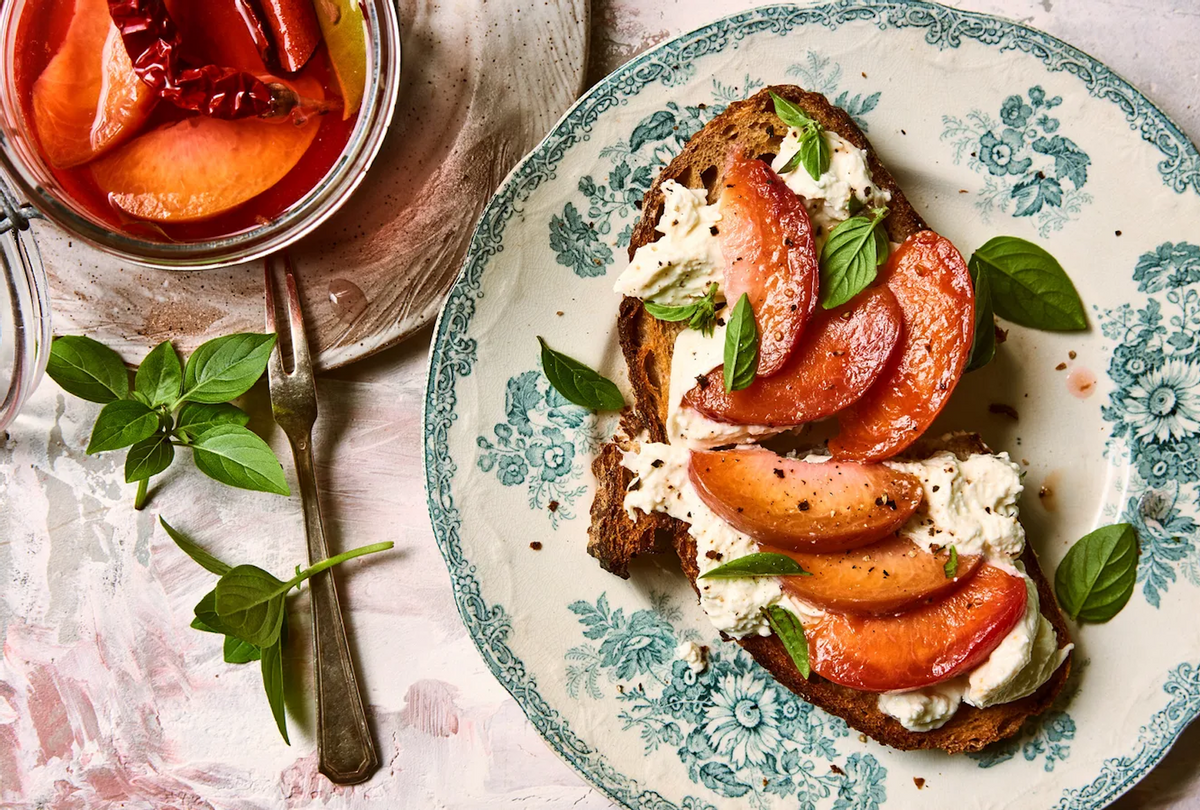Every month, Melina Hammer, Food52's very own Hudson Valley correspondent, is serving up all the bounty that upstate New York has to offer.
* * *
At its best, a peach must be eaten over the sink, juices dripping down your arm. At its worst, a peach is mealy and dry. To guarantee the first, seek out local peaches, which have been tree-ripened — they've spent more time growing to their fullest, plumpest size and are harvested just before being brought to market.
When ripe, peaches impart a distinctly peachy aroma and feel heavy for their size. Store peaches at room temperature — on the counter or in a shallow bowl to avoid bruising their tender flesh. Similar to tomatoes, peaches are best unrefrigerated if you're going to eat them raw. I migrate extra-ripe peaches to the fridge only if I'm in a pinch, and even then, only if they are destined for baking.
If your peaches are hard and underripe, this is delicious in its own way. Slice thinly and turn into a salad (take inspiration from som tum, Thai green papaya salad, or this Genius Recipe from Bill Smith). On the other end of the spectrum, squishy and overripe peaches are excellent as shrubs or jams. Don't let bruised fruit go to waste — there's a use for peaches at every stage.
According to The Food Encyclopedia, "next to the apple, the peach is the most widely cultivated fruit tree in the world" with "more than 2,000 varietals." Today, we'll cover some vital vocabulary for the season.
* * *
Types of Peaches
Freestone Peaches
One of two overarching classifications, freestone peaches are the most widely available. Since their pits are easy to dislodge, these peaches are great for baking, eating out of hand, canning, and pickling (yes, pickling!).
Clingstone Peaches
Somewhat sweeter and juicier than freestones, and the earliest on the scene each year. As you may expect from its name, the flesh must be cut away from the pit. These peaches are more commonly used for commercial canning.
White Peaches
With lighter flesh than yellow varieties and pale pink skin, the flavor is also slightly sweeter and less acidic. These peaches fall apart more easily, so they're less suitable for cooking and best eaten raw. Varieties include: Snow Giant, Summer Sweet, and White Dragon.
Yellow Peaches
These are the famed peaches often seen in the South: red skin and robustly yellow flesh, with a rosy center revealed once you dislodge the pit. They are juicy and sweet, with a balanced tanginess. Varieties include: Crimson Lady, Sugar Time, Contender, and Elberta.
Red Globe and O'Henry Peaches
My favorite yellow peach varieties, these have fuzzy red skin, and firm, red-streaked flesh. Red Globe and O'Henry are slightly more intensely flavored than their uniformly yellow cousins. They are wonderful with something savory, like scallops.
Doughnut Peaches
Doughnut peaches, aka saucer peaches, are an heirloom varietal beloved for their squat stature. They have white flesh and low acidity. And because of their novel shape, they have experienced a recent renaissance at farmers markets. These peaches are excellent eaten out of hand, added to salads, baked, or grilled.
Melting Flesh Peaches
These are exactly what they sound like — once they are ripe, rather than retaining firmness, their buttery flesh falls apart. Excellent texture for eating raw. Try the smaller, heirloom Gold Dust varietal for exceptional sweetness.
Nectarines
Did you know? Juicy and sweet nectarines are actually a type of peach. They express a gene variant, which makes their skin smooth instead of fuzzy. Great grilled, baked, or raw. Varieties include: Summer Fire, Honey Blaze, and Rose Diamond.
This post contains products independently chosen (and loved) by Food52 editors and writers. As an Amazon Associate and Skimlinks affiliate, Food52 earns an affiliate commission on qualifying purchases of the products we link to.




Shares